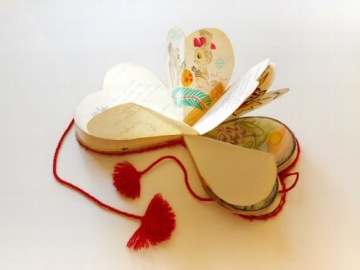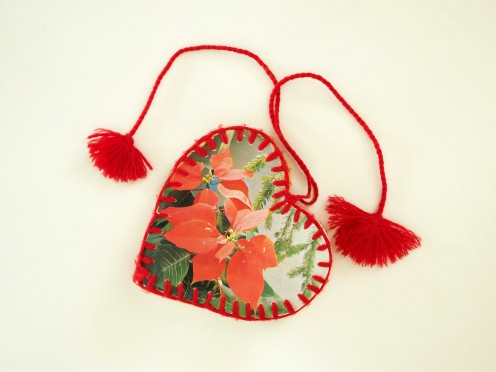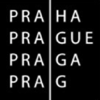If You Steal This Book, Your Hand Will Fall Off!
7 Mar – 3 Apr 2016

This exhibition is taking place at the Art Archive as part of the Polička/Shelf project.
Opening: 7 March from 5:00 p.m.
“But Grandma, you shan’t die, shall you?” – “Everything is in this world for only a while, my dear, the Lord shall call me as well,” said Grandma to Adélka, embracing her lovingly. They remained thus for a while; Grandma was lost in thought, the children knew not how to break the silence. Suddenly they heard a flutter of wings above them, and when they turned their gazes upward, they saw a flock of birds coursing through the air. “Those are wild geese,” said Grandma.
Božena Němcová: The Grandma
By the measure of academic art, the books featured in the March edition of the Polička/Shelf project are worthless. Their value is personal. Dozens of messages assemble into a relationship. The drawings are naïve and only rarely are the verses original. But an is more of a collection, and the drawings and poems in it are there mainly for the sake of remembering. But not a landscape, flowers, or poems, but a person who drew and wrote them for us, who perhaps wracked their brain and bit their nails just for us. And that they could do no better? – Is that the important thing? After all, a drawing in an autograph book is above all symbolic.
Let us ignore the clumsiness of the poems and the amateurish nature of the drawings. Every collection naturally also reflects the collector’s personality – already in the choice of what is collected. In a collection, which includes an autograph book, its founder reflected in the choice of those writing in it, and in the words they choose – they are not always their own, and only vaguely indicate the addressee’s chief personality traits; on the other hand, they serve better to indicate their social standing, the aesthetic atmosphere of the era in which they lived, and the locality of this life.
Let us for a moment go back in time. Even though the exhibited autograph books are only from the previous century, their apex came during the Biedermeier period, thus the first half of the nineteenth century, when they became fashionable. Not only did they fit perfectly into the atmosphere of a bourgeois household and were a pleasant source of entertainment for girls and young ladies (at the beginning of the nineteenth century, the education of girls focused on drawing and calligraphy), but already back then their significance was symbolic. After the drama of Romanticism, peace and domestic bliss become real and prized values for the general public. Reason and restraint, scorned by youth, were restored and celebrated during the sober Biedermeier period. And how else than through little things. Mere reason cannot explain love, respect for one’s ancestors, or the embrace of generations. But to this day, they are symbolized by things such as little books or jewellery with a concealed lock of hair. Cups with miniature portraits. Or hand-crocheted lace, handed down from generation to generation. It will signify what cannot be said, by presenting clearly what can be said. (Ludwig Wittgenstein, Tractatus Logico-Philosophicus).
During the second half of the twentieth century, autograph books as such disappeared, most likely for good. Their role (and many others) has been doubtlessly been assumed by Facebook. Restive, but no less sentimental; flexible, but rife with stereotypes. Playfulness and the need to share remain. But the peace that the Biedermeier period so desired is unimaginable today. Because that which took up just one page in an autograph book, fills thousands of imaginary pages on social networks. Be they sayings or quotes, advice, or folk wisdom. Amateur photos of friends taken for friends. Or a greeting card with calligraphy done in Draw...
Anna Pleštilová
___
During the opening of the March edition of Polička/Shelf, we would like to invite you for refreshments. We will be pleased to meet with you in the Little Tower over tea and cake, something especially apropos for this exhibition. And if you have an old autograph book of your own at home, please bring it with you!
The author of the text used the following book as a reference: Biedermeier: umění a kultura v českých zemích 1814 – 1848. Museum of Decorative Arts, Prague, 2008











